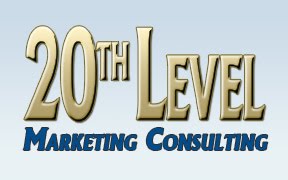When products existed as a physical item sold in a retail store, you'd need to design a cover. Whether it was a book, a CD case, a box, or something else, the external appearance, artwork, and text were important. A good cover would attract a customer, get them interested enough to look closely, and then provide enough information to convince them to buy (or at least help with the process).
Digital products, whether an ebook, an app, or a downloadable game, still need a "cover." Ebooks need a compelling cover page for display on the e-reader screen (which can be seen by other people occasionally) and in the online stores. Apps need a compelling icon. Downloadable products need some sort of icon and title combination.
Let's get one thing out of the way first: A good cover won't turn a bad product into a bestseller. But a bad cover can keep a good product from selling really well. Make sure your product is the best you can make it before spending significant time on the cover.
With that said, how do you approach creating a good cover? Start with some good artistic talent. If you're not an artist, hire one. Bribe one with a great dinner. Do whatever you can to get some good talent in graphics and artwork helping you out.
A good artist is not the same as a good cover designer. Unless someone is experienced at this highly specialized art form, they will need guidance. Even the specialist will need some info from the product creator. You have to tell them who the target audience is, and what the core experience of the product is. Is your product a grim killfest in an urban wasteland? Then the cover shouldn't have a happy bunny frolicking in a meadow.
Here are two key things to make sure your cover has:
Strong Visual. The cover should not be muddy, confused, or have too many elements. You should be able to glance at it from a distance and get an immediate impression that represents the product. Don't have a dozen soldiers doing a variety of things; use one soldier in a closeup. (You can have a scene with many elements, as long as there is one element clearly emphasized and everything else is background... but make sure the foreground element stands out sharply from the background.)
Strong Title. Sometimes the title can be the cover graphic... many novels use the title itself, with special font treatments, as the graphic. (Sometimes with a minor artistic touch, like a bullet hole or a rose or something evocative of the story within.) If the author's name is the biggest selling point, that may even be the biggest thing on the cover. Good titles are brief, memorable, and evoke the nature of the product.
Apps are somewhat different. These elements are important on your description page and your web site for the app. The app icon itself won't have a title; it will be a pure visual (with maybe the briefest of text actually in the app icon). An app icon has the additional challenge of doing these things without text in a very limited number of pixels. Your title has to be really brief, and you get no ability to choose a font... so make sure you've picked a good name.
Try out some early versions of your cover on friends, especially those that fit the target demographic. See if they can tell you what the product is on a quick glance. If they can't, you probably need to make it clearer. If you have to explain it so they get it, your cover isn't doing its job.
I used the cover art for the current bestselling game Call of Duty: Black Ops as an example of what I'm talking about. There's a single person on the cover, even though this is a multiplayer game. The title is clearly readable even in a small size. The artwork clearly says gritty, gun-totin' action, so it's accurately evoking the nature of the game. You can glance at this cover and know what the game is about and what the mood is like. Plus if you are already familiar with Call of Duty the name ropes you in to see the latest game in the series. (In this case I don't think the cover is making much difference to the sales, but you certainly wouldn't want a poorly done cover that might hurt sales.)
One final note: My suggestions here are purely from a marketing point of view. I'm not an artist or a designer. I'm a marketer trying to create art that sells products. Keep your artist focused on that; they aren't creating art to hang in a gallery, this is art that needs to work at selling a product.
Anthropic and the Future of Copyright
1 month ago





No comments:
Post a Comment